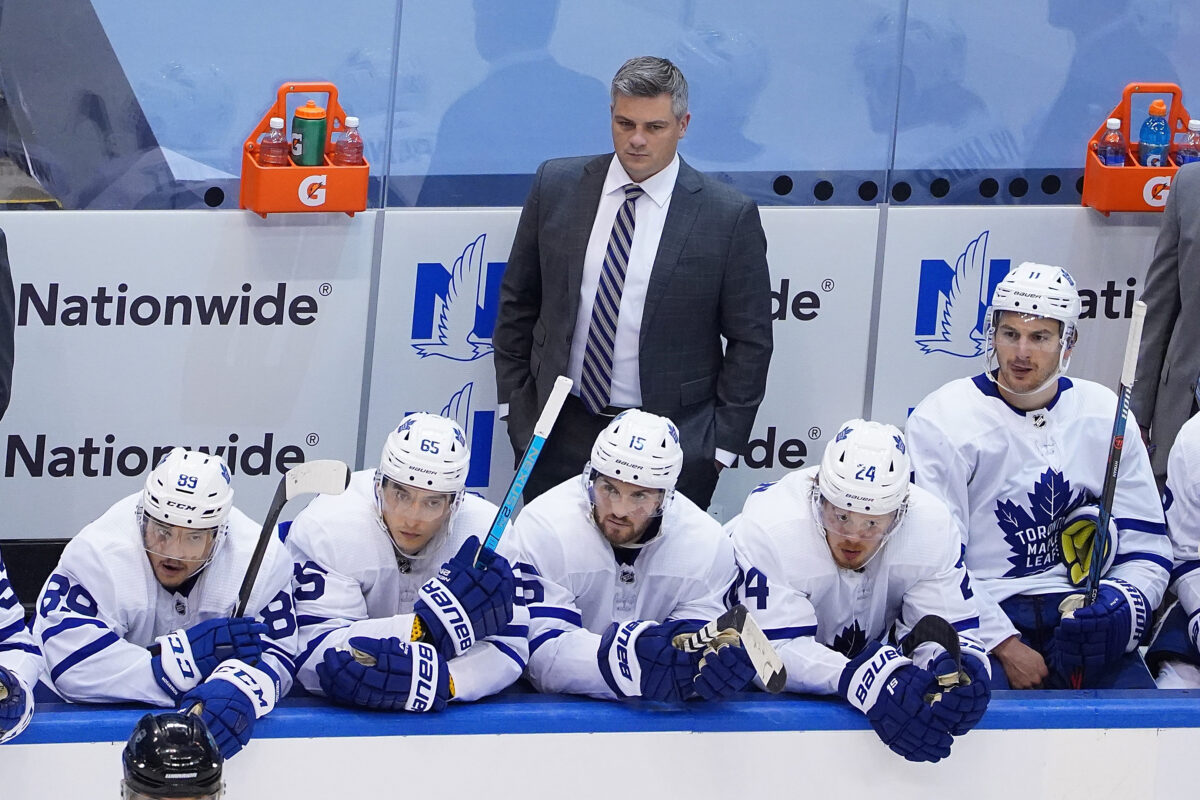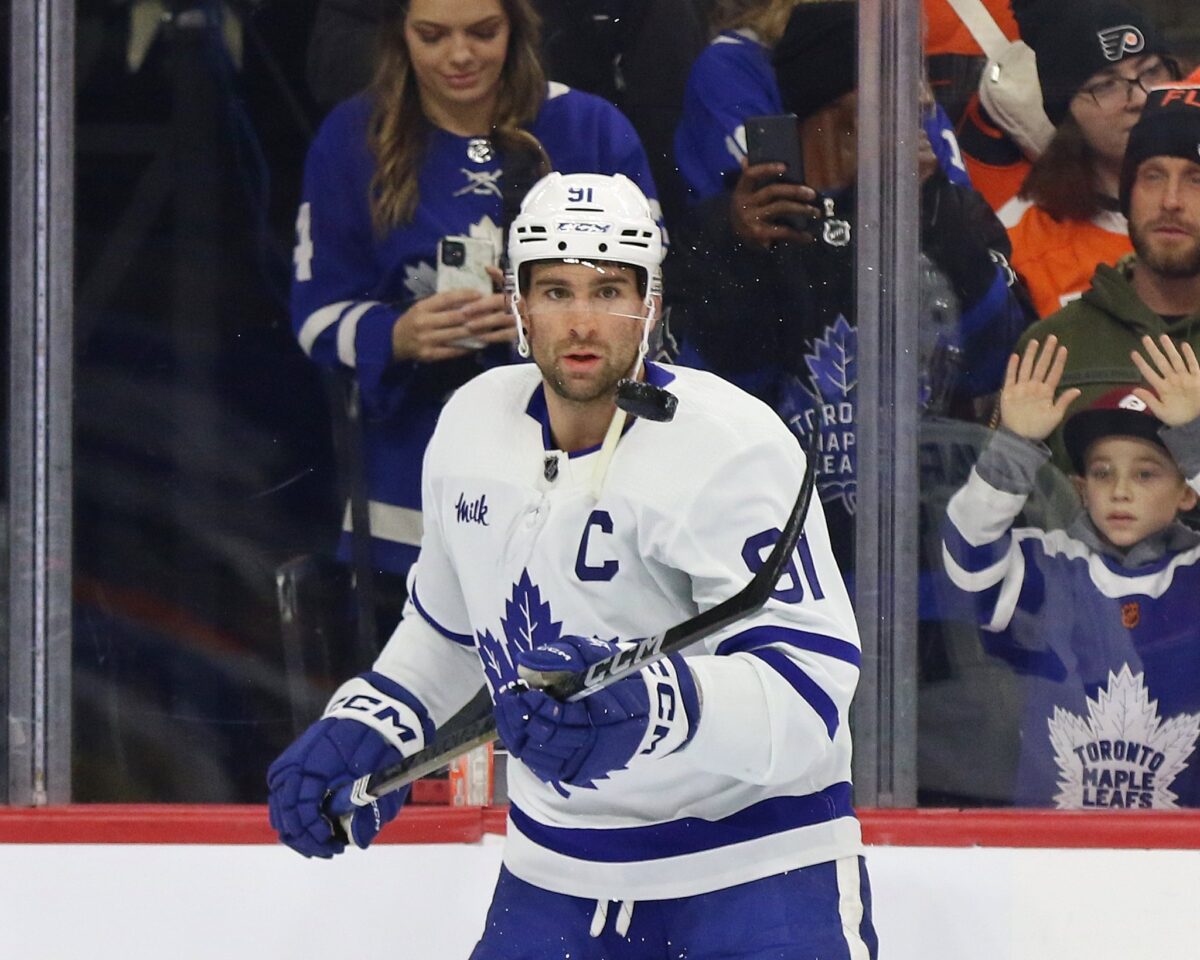One notable change in the Toronto Maple Leafs’ 2023-24 season has been the separation of Head Coach Sheldon Keefe from the team’s former general manager (GM) Kyle Dubas. Many Maple Leafs fans seem to believe that coach Keefe and GM Dubas were close and, because they’ve worked together for so long, were on the same page when it comes to running a team. It’s almost as if the two have shared a brain, particularly in their approach to how hockey is best played.
Related: Best NHL Goalies of the 1980s
However, watching the team play this season suggests that this assumption might not be accurate. There are indications that Keefe and Dubas might not have always seen eye-to-eye on all aspects of running the team. While they shared key similarities in their thinking about the game, it’s becoming evident that they probably didn’t always align in their decision-making.
Either that or Keefe is evolving and changing as a coach.
Now that Keefe Is Unshackled from Dubas, What Has Changed?
This season, we’ve seen a different Keefe when it comes to running his team. The Maple Leafs’ strategies and operations have changed, and it isn’t out of the realm of possibility that one reason is that Dubas is no longer Keefe’s direct boss.
Unshackled from Dubas, Keefe seems to be steering the Maple Leafs toward a more defense-first strategy. In the past, both Stan and I have observed many of the games the Marlies played under Keefe’s guidance en route to winning the Calder Cup. Those teams had skill; however, they also consistently showed a sound defensive-first approach.
Related: Winter of Leafs’ Discontent: Sheldon Keefe’s Coaching in Question
There have also been other evident changes in how Keefe has engaged his team as a coach. Three stand out: (1) Keefe’s emphasis on accountability and direct focus discipline; (2) his strategic line deployment and flexibility; and (3) his move to a three-line attack.
First, Keefe’s Emphasis on Accountability and Directness
This season, Keefe has displayed a notable increase in accountability and directness toward his players, both in public and (we hear) behind closed doors. Unlike previous seasons, where issues might have been addressed more passively, Keefe has become more vocal in calling out deficiencies and acting on them.

These include such things as the team’s defensive lapses and lack of effort. For instance, in December, he reportedly ran one of his most animated practices, and in November, he publicly criticized the team for celebrating goals without focusing on defensive play. This change suggests a sense of directness from Keefe as he tries to motivate his team and address issues head-on, especially during a challenging first half of the season.
Related: Sheldon Keefe Is Staying on the Hot Seat as Treliving Takes Over
We’ve seen David Kampf become a healthy scratch for a game after a defensive mistake. And we’ve seen even William Nylander sit out the last half of a period after he cheated on defense to try to sneak away for an offensive chance that backfired. The recent response by Nylander has been one of his more effective 200-foot games against the Buffalo Sabres.
Second, Keefe’s Strategic Line Deployment and Flexibility
Another significant difference in Keefe’s coaching approach this season is his strategic line deployment and the move to even more flexibility. In contrast to previous experiments or adjustments that might have seemed more disjointed or one-offs, Keefe has been locking in new line combinations for longer periods as a way to evaluate their play strategically.
By doing so, he’s aimed to create a more well-rounded team. He’s also demonstrated a willingness to make immediate changes during games based on player performance. While this sometimes has been a quick adjustment after an on-ice mistake, it isn’t always. This approach has led to a more fluid and interchangeable lineup, where players’ roles are determined by their game performance rather than being set in stone.
Third, Keefe’s Transition to a Three-Line Attack
Under Keefe’s coaching, the Maple Leafs have begun to transition to a legitimate three-line attack. The result has been the emergence of a more balanced offensive contribution across the lineup. Moving John Tavares to a bottom-six role as a third-line center with new players has been one evident aspect of this move.

This shift seems focused on increasing the team’s secondary scoring by building a lineup where every player is relied upon for a measure of offensive production. Since February 1, the Maple Leafs have led the NHL in goals scored, showcasing the effectiveness of this new approach. The move has shown Keefe’s desire to embrace the philosophy of balancing the offensive attack rather than hoping the bottom six units play good enough defense to hold the team in the game until the top two lines can come in and score.
Keefe’s Coaching Is Completely Overhauled, But It’s Changed
These three changes reflect a departure from previous coaching strategies. They also highlight his desire to optimize the team’s offensive output while making them defensively focused throughout the lineup.
Overall, while Keefe’s fundamental coaching style might not have undergone a complete overhaul, there have been noticeable shifts in his approach and increased accountability since Brad Treliving began his tenure as the Maple Leafs GM. Whether these adjustments will benefit the team as they enter the playoffs remains to be seen, but they do represent an evolution in Keefe’s coaching.
The Maple Leafs Have Seen Some Success Thus Far
Although any optimism in writing today seems mediated downward in the shadow of the team’s two recent lackluster 4-1 losses to the Boston Bruins just before the past week, the changes in Keefe’s philosophy seemed positive. After Morgan Rielly was suspended for five games and when Tavares missed games, Keefe’s team showed how a defensively committed team can win. They went on a seven-game winning streak.
Related: PWHL Announces Playoff Format, Changes to Draft
Until the Bruins games, the lone exception was the second Vegas Golden Knights game, where the Maple Leafs deviated from their strategy midway through the game and eventually lost by a score of 6-2. Still, the score remained 0-0 for the first half of the game as Toronto adhered to their game plan until Vegas broke the deadlock.
It seems the entire team has embraced the defense-first concept. That includes both Rielly and Tavares. Both team leaders have been willing to accept lesser roles if these translate to wins, particularly headed into the playoffs. Rielly still quarterbacks the power play time but has seen a drop in 5-on-5 ice time, mostly paired with third-pairing defensemen. Tavares seems willing to work with and mentor younger players, even if his time on the ice is dropping and he’s no longer on the first unit of the power play.
Now, Maple Leafs fans will see how all this translates into the postseason.
[Note: I want to thank long-time Maple Leafs fan Stan Smith for collaborating with me on this post. Stan’s Facebook profile can be found here.]
